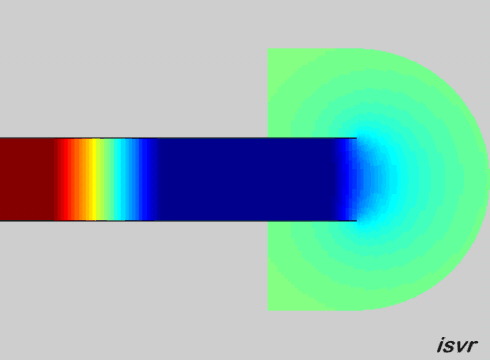| |
Many interesting problems
in acoustics involve the radiation of sound from the end of a pipe. These
range from
the noise produce by car exhausts to the acoustics of wind instruments like flutes or
organ pipes.

In your physics lessons you will have seen
how open-ended pipes have resonances, similar to strings, but with
antinodes of particle displacement at the open end. These correspond
to pressure nodes. At low frequencies, where the wavelength is long
compared to the diameter of the pipe, this is a very good approximation as
you can see from the first animation below, where one end of such a pipe
is shown. The pressure patterns alternate between high and low
pressure, as we would expect from a standing wave. The pressure
node, however, is not exactly at the open end, but a little way beyond.
Not much sound escapes from the end of the pipe.

When the wavelength is shorter, and comparable
with the diameter of the pipe this effect is much more pronounced, the pressure
node is even further from the end of the pipe, and the sound is radiated much
more efficiently.

|